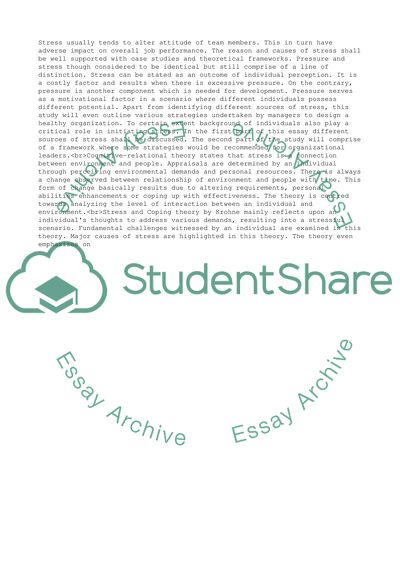Cite this document
(Describe the major sources of stress at work. How might managers Essay - 2, n.d.)
Describe the major sources of stress at work. How might managers Essay - 2. https://studentshare.org/management/1866378-describe-the-major-sources-of-stress-at-work-how-might-managers-create-more-healthy-organisations-in-your-answers-to-both-parts-of-the-question-make-specific-reference-to-theories-and-examples-from-at-least-three-of-the-core-topics-showing
Describe the major sources of stress at work. How might managers Essay - 2. https://studentshare.org/management/1866378-describe-the-major-sources-of-stress-at-work-how-might-managers-create-more-healthy-organisations-in-your-answers-to-both-parts-of-the-question-make-specific-reference-to-theories-and-examples-from-at-least-three-of-the-core-topics-showing
(Describe the Major Sources of Stress at Work. How Might Managers Essay - 2)
Describe the Major Sources of Stress at Work. How Might Managers Essay - 2. https://studentshare.org/management/1866378-describe-the-major-sources-of-stress-at-work-how-might-managers-create-more-healthy-organisations-in-your-answers-to-both-parts-of-the-question-make-specific-reference-to-theories-and-examples-from-at-least-three-of-the-core-topics-showing.
Describe the Major Sources of Stress at Work. How Might Managers Essay - 2. https://studentshare.org/management/1866378-describe-the-major-sources-of-stress-at-work-how-might-managers-create-more-healthy-organisations-in-your-answers-to-both-parts-of-the-question-make-specific-reference-to-theories-and-examples-from-at-least-three-of-the-core-topics-showing.
“Describe the Major Sources of Stress at Work. How Might Managers Essay - 2”. https://studentshare.org/management/1866378-describe-the-major-sources-of-stress-at-work-how-might-managers-create-more-healthy-organisations-in-your-answers-to-both-parts-of-the-question-make-specific-reference-to-theories-and-examples-from-at-least-three-of-the-core-topics-showing.


